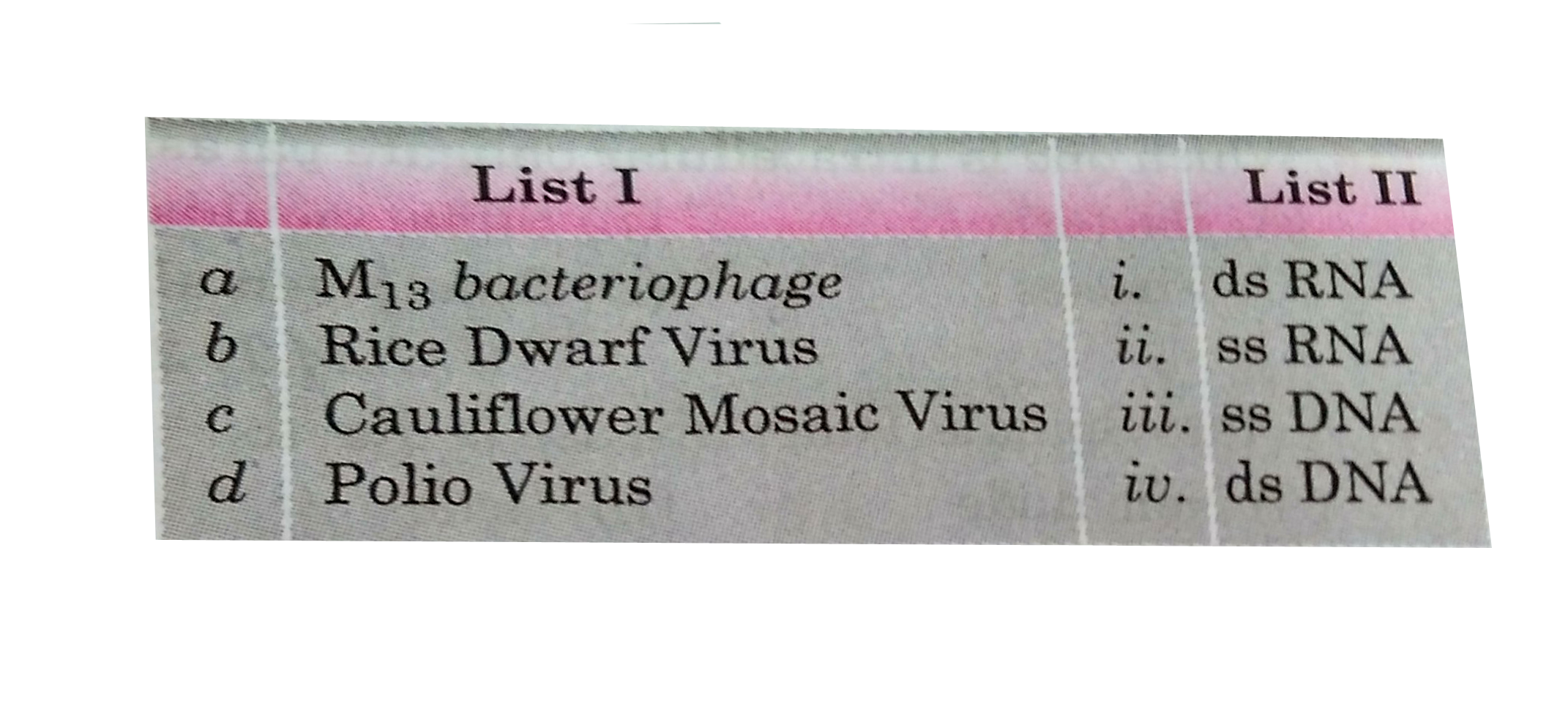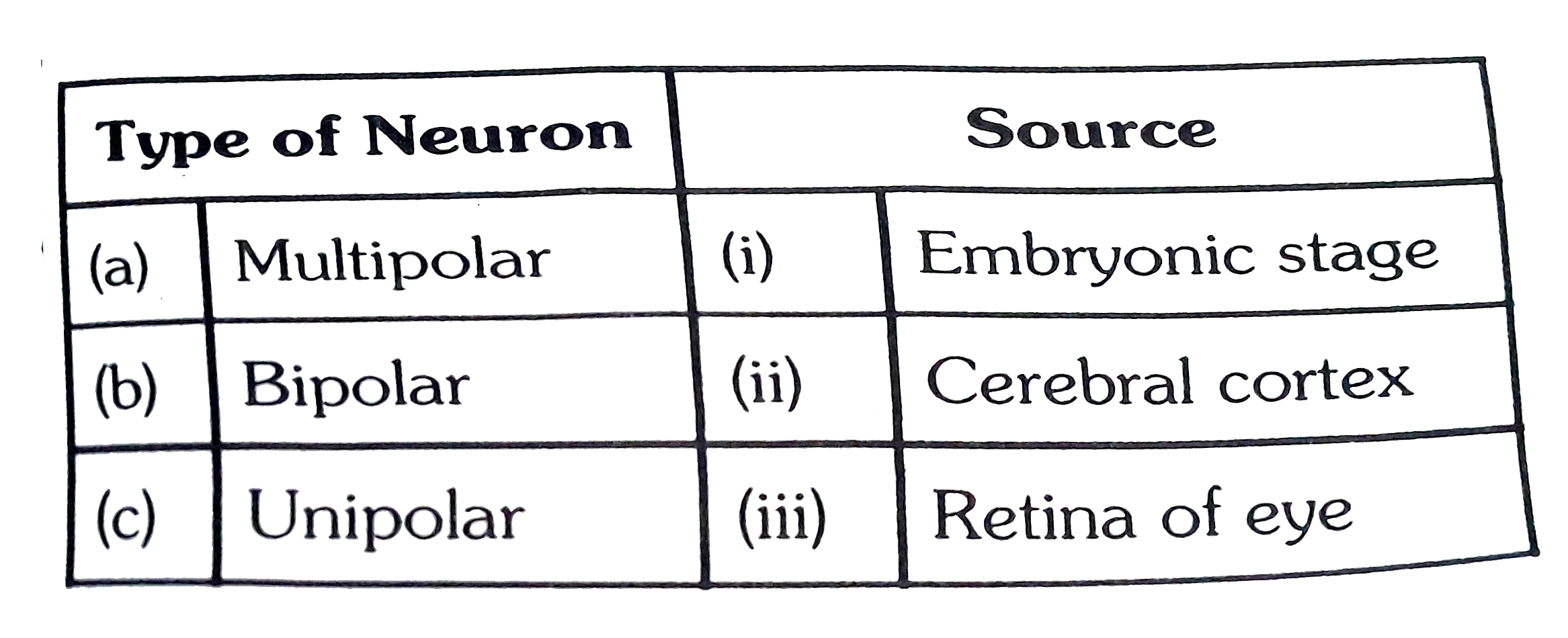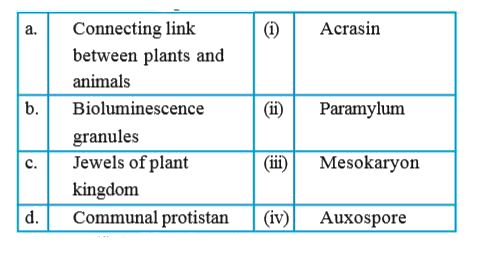Match and find the correct option
IIIaTransferasesiEpimerasebHydrolasesiiKinasescLyasesiiiPhosphatedIsomeraseivFumarase
(a) a-ii, b-iii, c-iv, d-i
(b) a-ii, b-iii, c-i, d-iv
(c) a-v, b-i, c-iv, d-iii
(d) a-ii, b-i, c-v, d-iii
a-ii, b-iii, c-iv, d-i
a-ii, b-iii, c-i, d-iv
a-v, b-i, c-iv, d-iii
a-ii, b-i, c-v, d-iii.
The correct Answer is:A
To solve the question, we need to match the enzyme classes from the first column with their corresponding examples in the second column. Let's break it down step by step:
Step 1: Understand the Enzyme Classes
1. Transferases: These enzymes catalyze the transfer of a functional group from one molecule to another.
2. Hydrolases: These enzymes catalyze the hydrolysis of various bonds, breaking them down with the addition of water.
3. Lyases: These enzymes catalyze the cleavage of bonds by means other than hydrolysis or oxidation, often forming a double bond or a ring structure.
4. Isomerases: These enzymes catalyze the rearrangement of atoms within a molecule, converting it from one isomer to another.
Step 2: Match Each Enzyme Class with its Example
1. Transferases: The example given is Kinases. Kinases transfer phosphate groups, so A matches with ii.
2. Hydrolases: The example given is Phosphatase (not Phosphate). Phosphatases are a type of hydrolase that removes phosphate groups, so B matches with iii.
3. Lyases: The example given is Fumarase. Fumarase is an enzyme that catalyzes the conversion of fumarate to malate, so C matches with iv.
4. Isomerases: The example given is Epimerase. Epimerases are a type of isomerase that catalyze the inversion of specific stereocenters, so D matches with i.
Step 3: Compile the Matches
- A matches with ii (Transferases - Kinases)
- B matches with iii (Hydrolases - Phosphatase)
- C matches with iv (Lyases - Fumarase)
- D matches with i (Isomerases - Epimerase)
Step 4: Identify the Correct Option
Now we can look for the option that matches our findings:
- A-ii, B-iii, C-iv, D-i corresponds to option (a).
Final Answer
The correct option is (a) a-ii, b-iii, c-iv, d-i.
---
1. Transferases: These enzymes catalyze the transfer of a functional group from one molecule to another.
2. Hydrolases: These enzymes catalyze the hydrolysis of various bonds, breaking them down with the addition of water.
3. Lyases: These enzymes catalyze the cleavage of bonds by means other than hydrolysis or oxidation, often forming a double bond or a ring structure.
4. Isomerases: These enzymes catalyze the rearrangement of atoms within a molecule, converting it from one isomer to another.
1. Transferases: The example given is Kinases. Kinases transfer phosphate groups, so A matches with ii.
2. Hydrolases: The example given is Phosphatase (not Phosphate). Phosphatases are a type of hydrolase that removes phosphate groups, so B matches with iii.
3. Lyases: The example given is Fumarase. Fumarase is an enzyme that catalyzes the conversion of fumarate to malate, so C matches with iv.
4. Isomerases: The example given is Epimerase. Epimerases are a type of isomerase that catalyze the inversion of specific stereocenters, so D matches with i.
- A matches with ii (Transferases - Kinases)
- B matches with iii (Hydrolases - Phosphatase)
- C matches with iv (Lyases - Fumarase)
- D matches with i (Isomerases - Epimerase)
Now we can look for the option that matches our findings:
- A-ii, B-iii, C-iv, D-i corresponds to option (a).
The correct option is (a) a-ii, b-iii, c-iv, d-i.
Topper's Solved these Questions
- MOLECULES OF THE CELLBook:DINESH PUBLICATION ENGLISHChapter:MOLECULES OF THE CELLExercise:CYG
Explore 43 Videos
- MOLECULES OF THE CELLBook:DINESH PUBLICATION ENGLISHChapter:MOLECULES OF THE CELLExercise:CYG
Explore 43 Videos
- MICROBES IN HUMAN WELFAREBook:DINESH PUBLICATION ENGLISHChapter:MICROBES IN HUMAN WELFAREExercise:Brain Teasers-VIII
Explore 60 Videos
- MOLLUSCABook:DINESH PUBLICATION ENGLISHChapter:MOLLUSCAExercise:CYG
Explore 10 Videos
Similar Questions
Find the correct matches

(1) a-iii, b-i, c-iv, d-ii
(2) a-ii, b-i, c-iii, d-iv
(3) a-iii, b-iv, c-ii, d-i
(4) a-iv, b-iii, c-I, d-ii
View Solution
(a) a-i,b-iii,c-ii
(b) a-iii,b-ii,c-i
(c) a−ii,b−iii,c−i<br>(d)a-ii,b-i,c-iii
View SolutionMatch the columns and find the correct combination
(a)Ptyalin (i)Lipids(b)Pepsin(ii)Starch(c)Steapsin(iii)DNA(d)Nuclease(iv)Protien
View SolutionMatch the columns and find the correct options
IIIaPigmentsiAbrin, ricinbToxinsiiConcannavalin AcAlkloidsiiiCorotenoidsdLectinsivMorphine, codeine
View Solution
1 a(iii), b(ii), c(i), d(iv)
2 a(i), b(iv), c(i), d(iii)
3 a(iv), b(i), c(iii), d(iv)
4 a(ii), b(iii), c(iv), d(i)
View SolutionMatch and find the correct combination
{:(,(a),HIV,i,Ghost),(,(b),"Pilus",(ii),"Prophage"),(,(c),"Virus",(iii),"Retro viridae"),(,(d),"Lysogeny",(iv),"Donor"):}
View SolutionMatch the disease in Column I with the appropriate items
(vector/ pathogen/ diagnostic test/ treatment) in Column II
Column - IColumn - IIa.Ringwormi.Aedesb.Ascariasisii.Widal test c.Dengueiii.Blockage of the intestinal passaged.Typhoidiv.Trichophyton
(1) a-(iv) ,b-(iii), c-(i), d- (ii)
(2) a-(ii) ,b-(iii), c-(i), d- (iv)
(3) a-(iv) ,b-(i), c-(ii), d- (iii)
(4) a-(i) ,b-(ii), c-(iii), d- (iv)
View SolutionMatch the columns and find the correct combination III(a)Hypotonic (i)Water(b)Hypertonic(ii)Sucrose(c)Solute(iii)Lower tonicity(d)Solvent(iv)Higher tonicity
View SolutionMatch and find the correct option
aOxidoreductasesiLinking of two compoundsbIsomerasesiiRemoval of group from substratescLigasesiiiIntercoversion of isomersdLyasesivDehydroganasesvHydrolysis
View SolutionMatch the find the correct option
III(a)Strobilanthus(i)Tiger Claw Plant(b)Martynia(ii)Century Plant(c)Lodoicea(iii)Neelakuranji(d)Viola(iv)Common Pansy(v)Double Coconut
View Solution

